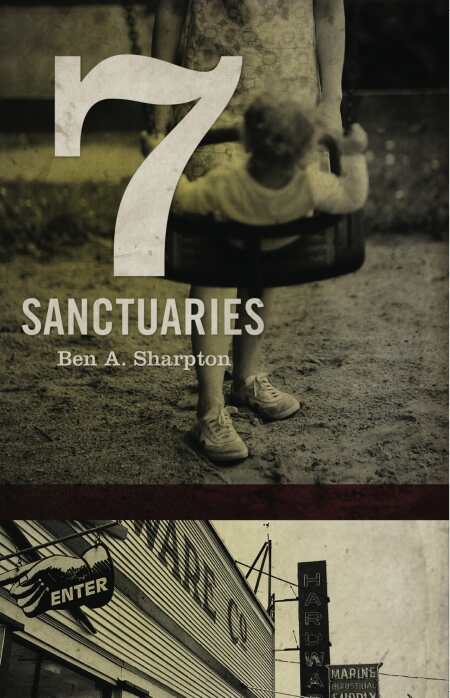
7 Sanctuaries
The concept of sanctuary often carries religious overtones, and there is indeed something personally sacred about any place where an individual feels safe and secure. Ben A. Sharpton has taken the concept further in his new novel, 7 Sanctuaries, offering seven different but intertwined tales of people seeking and finding their own safe havens from turmoil in the racially divided American South of the 1960s.
The fictional Springlake, Florida, serves as the small-town setting for Sharpton’s overlapping stories, and the cast of characters is extensive and varied, but it is the 1960s that function as the star attraction. Sharpton’s details are incredibly precise, and his tales are certain to evoke very clear memories for anyone who lived through that era. Younger readers, in particular, are cautioned that the language the characters use is not considered politically correct today, but Sharpton’s depiction of the place and the times is decidedly accurate.
Racial strife, segregation, integration, and their related societal issues simmer in the background as the decade begins. As the Civil Rights Movement makes headway, even in the small town of Springlake, accepted norms begin to crumble, and the simmer soon turns to a full boil. What is billed as an “All-America Rally” turns out to be a gathering of the Ku Klux Klan.
Confusion and uncertainty reign as unknown consequences loom. It is a time of serious change, and as one character wryly comments, “Sure, some people say they like change … But when it gets right down to it, the only thing good about change is the feeling we get when we drop a little into the offering plate.” In such tumultuous days, people seek sanctuary. Sharpton offers it to his characters in their homes, their schools, their work, their churches, and more, but it is never quite enough.
An exciting new president has been elected and tragically assassinated; other assassinations soon follow. The Vietnam War has begun to rage in a land far from sunny Florida, but it all comes directly into Springlake’s homes via live footage on the newly graphic evening news. The music, the hair, the drugs, and simply the general attitude of the 60s take hold among America’s youth with a strength and vengeance that frightens their elders. Memories of World War II and the Korean conflict that followed are still fresh, and all the new turmoil seems so senseless. Sanctuary cannot be the same for everyone.
Sharpton captures the mood and spirit of the era so well that it is easy to forget sometimes that his story is fiction. The characters are realistic, and many feel positively familiar, like someone known years ago, back home. The 60s were a time of great transition and turbulence, but many who lived through them neither can nor want to forget. Those less familiar with the era may trust that Sharpton’s 7 Sanctuaries offers a valid portrayal of some of what small-town America faced during those years. In addition to that, it is simply a darn good story.
Reviewed by
Cheryl Hibbard
Disclosure: This article is not an endorsement, but a review. The publisher of this book provided free copies of the book and paid a small fee to have their book reviewed by a professional reviewer. Foreword Reviews and Clarion Reviews make no guarantee that the publisher will receive a positive review. Foreword Magazine, Inc. is disclosing this in accordance with the Federal Trade Commission’s 16 CFR, Part 255.
